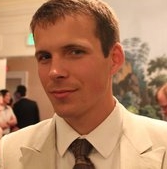Photon Count Rates Measured From 1,980 Clinical CT Scans
T Szczykutowicz1*, R Bujila2, Z Yin2, S Slavic2, J Maltz2, (1) University Wisconsin-Madison, Madison, WI, (2) GE Healthcare, Waukesha, WI
Presentations
TH-D-201-4 (Thursday, 7/14/2022) 11:00 AM - 12:00 PM [Eastern Time (GMT-4)]
Room 201
Purpose: Exceeding photon counting detector characteristic count rates causes increased noise, reduced material quantification accuracy, and artifacts. To guide development in the photon counting space, knowledge of clinical count rates spanning the range of clinical indications and patient sizes is needed.
Methods: We retrospectively gathered 1,980 patient exams spanning the entire body. We assigned the tissue labels air/lung/fat/soft tissue/bone to each voxel. We then modelled four different bowtie filters, 70/80/100/120/140 kV spectra, and a range of mA values. We forward-projected each slice to obtain detector-incident count rates.
Results: For routine exam types, we recorded count rates of approximately 3.5 ×10⁸ counts/mm/s in the torso, extremities, and brain. For neck scans we observed count rates near 6 x10⁸ counts/mm/s. Our simulations of 1,000 mA, appropriately mimicking the mA needs for fast pediatric, fast thoracic, and cardiac scanning, resulted in count rates of over 10 x10⁸ counts/mm/s for the torso, extremities, and brain. At 1,000 mA, for the neck region, we observed count rates close to 2 x10⁹ counts/mm/s. Importantly, we saw only a small change in maximum count rate needs over patient size, which we attribute to patient mis-positioning with respect to the (centered) bowtie filters. The 99th to 50th percentile count rate changed the most for the torso region, with a maximum variation of 3.9x10⁸ to 1.2x10⁷ counts/mm/s. The head/neck/extremity regions had less than a 50% change in count rate from the 99th to 50th percentiles.
Conclusion: Our results should be useful in helping researchers understand count rates as a function of body region and mA for various combinations of bowtie filter designs and beam energies.
Funding Support, Disclosures, and Conflict of Interest: TPS receives research support and is on an advisory board to GE Healthcare both through UW Madison. TPS is a consultant to AstoCT LLC, ALARA Medical, AiDoc, and FlowHow.ai. All other authors are employees of GE Healthcare.
Keywords
Taxonomy
IM- CT: Detector development & evaluation
Contact Email



